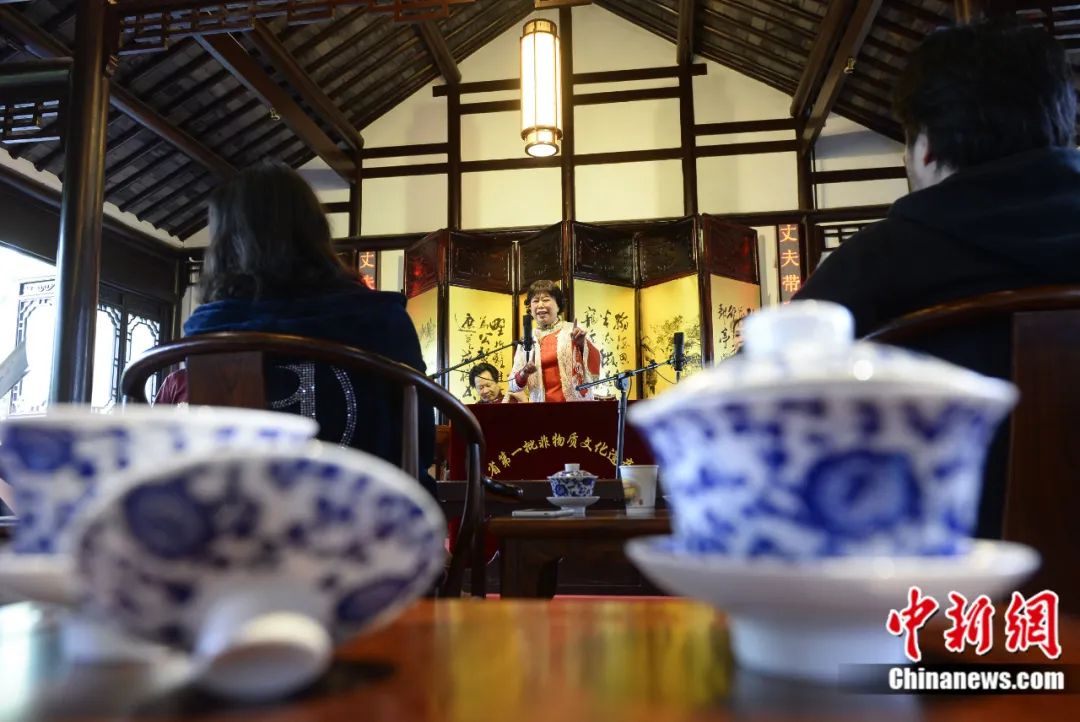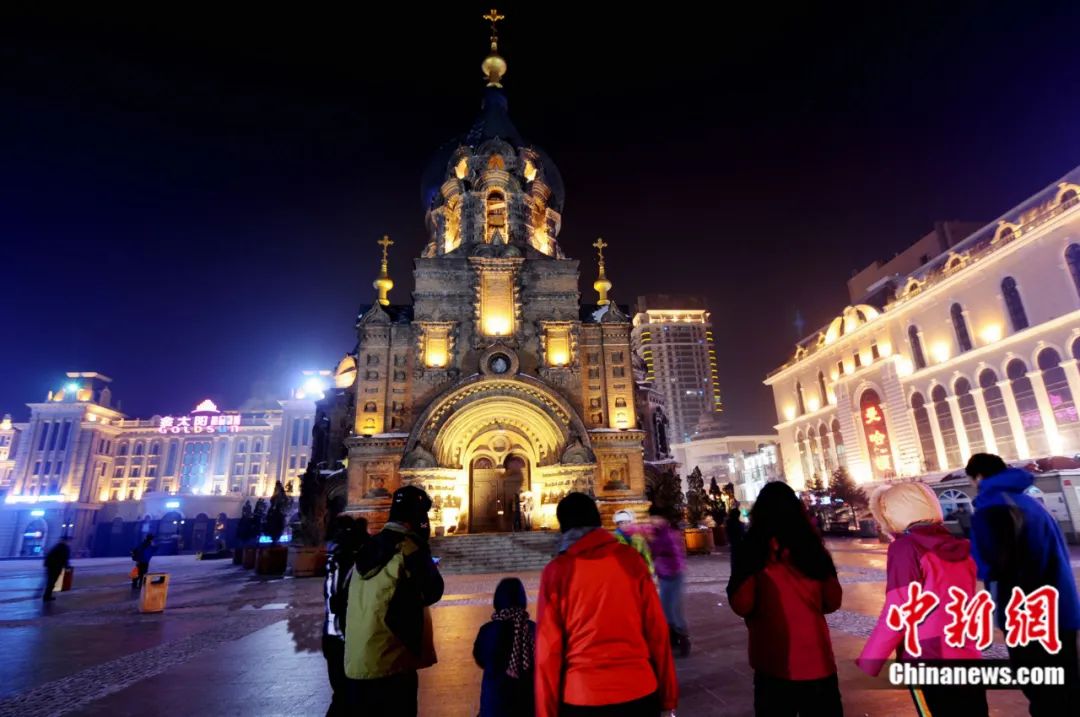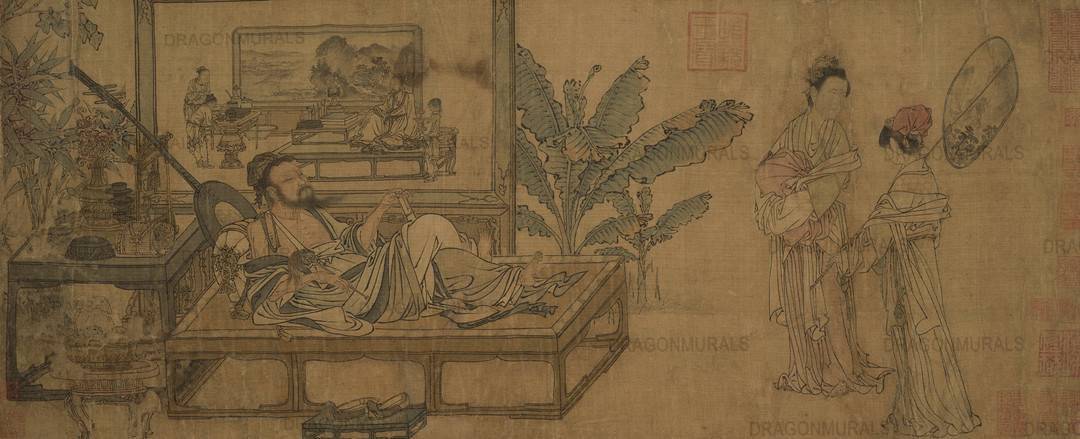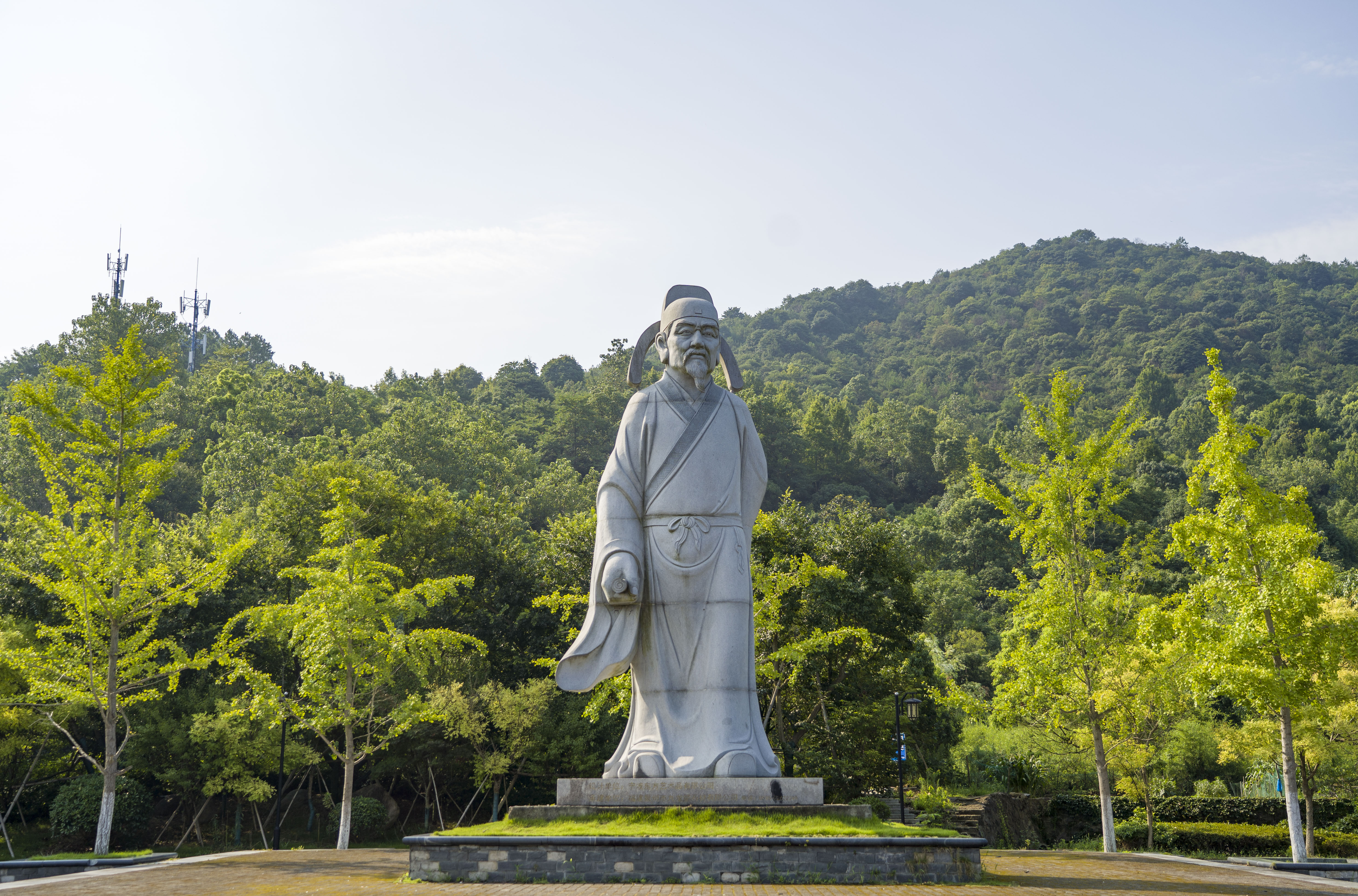Bai Ruosi: How can Russian sinology promote Sino -Russian cultural exchanges?|
Author:China News Weekly Time:2022.09.12

On the spirit of Chinese culture in terms of spirit
The greatest contribution to world civilization
I will choose Confucian thoughts, Tang and Song poems
The three "keywords" of traditional Chinese painting
China News Agency reporter: Wen Longjie
Number of full text: 2857
Estimated reading time: 10 minutes

Russian Sinology occupies a very important position in the history of sinology in the world, and together with Western Sinology and Eastern Chinese Character Cultural Circle Sinology, forms the three major sections of international sinology. Since the 18th century, Russian Sinology has a history of nearly 300 years. It has a long reputation in the international Sinology community. Marx has cited the works of Russian sinologists in Capital.
Russian Sinology has not only promoted Sino -Russian cultural exchanges, and it is also an important part of Sino -Russian cultural exchanges. Rostislav Berezkin, a Russian sinologist and a researcher at the Fudan University Institute of Culture and History, recently accepted an exclusive interview with China News Agency "East and West", telling his own research history of Sinology, and giving Observation and interpretation of Russian Chinese exchange exchanges on how Russian sinology to promote Russian Chinese culture exchanges. Essence
Abstracts are currently recorded as follows:
China News Agency reporter: How did you associate with Sinology? In other words, how did you enter Sinology research and take sinology as a business?
Bai Ruosi: I was born and grew up in St. Petersburg. St. Petersburg is the center of Russian traditional Sinology. From the beginning of the 18th century to the October Revolution, St. Petersburg has been the capital of the Russian Empire. The main research institutions are concentrated here, including the Russian Academy of Sciences, the Asian departments of the Ministry of Foreign Affairs, and colleges and universities. I first came into contact with the ancient Chinese cultural relics collected by the local museum, such as the various Chinese arts collected by the Almytash Museum. Since then, they have gradually begun to be interested in Chinese classical literature, such as ancient poetry and phrase novels. I started to read the Russian translation, and I started to learn Chinese at the age of 16. Later, I decided to study Chinese literature and culture as my own cause, and admitted to the Chinese majors of the Oriental University of St. Petersburg National University. The school is the center of traditional Sinology, and attaches great importance to Chinese history, literature, and ancient Chinese teaching. I finished undergraduate, master, and deputy doctorate at St. Petersburg National University, and later had the opportunity to go to the United States to study for a PhD.
Reporter of China News Agency: Can the study of the treasure rolls in the international Sinology community you do, can you briefly introduce the research of Baojuan? What is the significance of promoting the exchange of east and west cultural exchanges?
Bai Ruosi: As a type of traditional Chinese lecturer, Baojuan adopts the form of rhymes, which mainly tells the story of folk popularity. It is formed in the Song and Yuan Dynasties. Its relevant research involves different aspects of this literary genre. On the one hand, as a literature, the treasure roll has different forms of text. The earliest manuscript was spread by Baojuan Literature, and later a large number of woodcuts and stone prints also appeared. At the same time, these literatures are mainly used as the foundation for singing literature and art. Regarding this kind of singing, different places are different. The southern part of Jiangsu is generally called "Xuanjuan", while Gansu is called "Nianjuan". During the Ming and Qing Dynasties, it prevailed in many places in China, but at present, only a few areas still retain the customs of Baojiao.

Visitors watched Xuan Volume performances at the Missionary Museum in Jinxi Ancient Town, Jiangsu. Photo by Liu Zhen from China News Agency
With the development of Chinese popular literature research, around the mid -20th century, Chinese scholars began to pay attention to Baojuan literature. Because of the close relationship with Chinese folk culture and folk customs, it has also aroused the interest of foreign scholars. By the end of the 20th century, more important foreign research results have occurred. When I first started studying, "Baojuanxue" was internationally unpopular, but recently not only in China, but also in several North America and Western European countries. In recent years, Western Sinologists have made a lot of English translations of Baoji, and Baojie has entered the traditional Chinese literature classroom of famous foreign schools. Through the translation, foreign readers who do not know Chinese can also understand ancient Chinese life and customs. In my opinion, some of the literary value of some of these treasure roll texts are quite high. In the future, like ancient Chinese poetry, novels, and phrase novels, it will become a part of world literature.

The heirs in Hexi Baojuan, Gaotai County, Gansu, performed "Hexi Baojuan" in the hoe. Photo by Yang Yanmin sent by China News Agency
China News Agency reporter: What is the status quo of Sinology in Russia?
Bai Ruosi: Many Russian and foreign scholars now believe that traditional Russian sinology is in a state of decline, but I can't fully agree with this statement. Indeed, Russia is currently younger in researching ancient China, but we must also consider the issue of "traditional Sinology". First of all, the definition of "Sinology" is more vague. What does it mean? On the one hand, it refers to the study of Chinese history, language, literature, etc. On the other hand, it is necessary to put relevant research into a larger framework and adopt a comparative research method. In other words, we cannot only study China's data, but we must use other countries to compare with related theories. Therefore, I might as well say "Chinese Literature Research" and "Chinese History, Economic Research". Of course, Russian Sinology already has this trend, such as the "Outline of Chinese Literature" published by Academician Vasilyyev (Wang Xili) in 1880, which belongs to a series of literary history outlines in the world. Not to mention period research, it has a large interdisciplinary nature; but in the past, Russian scholars in Russia still lack the academic training of other universities. Hope the situation will improve in the future. In addition, I think sinologists have to pay attention to contemporary situations, and in ancient times, we must also consider the role and value of contemporary life and culture in ancient times. In this way, Sinology will catch up with the times and enter a new stage of development. Reporter of China News Agency: What role does Russian Sinology research play in promoting Sino -Russian cultural exchanges?
Bai Ruosi: In the process of promoting Russian Chinese culture, Russian Sinology has a great role. Of course, the initial Russian Chinese exchange exchanges were mainly manifested in material cultural exchanges. Earlier Russian -China relations were mainly traded by caravan trade. Russia imported many Chinese goods, and China also demanded that Russia has fur and other materials and items.
Peter the Great recognized the importance of Russia and China exchanges and decided to develop diplomatic relations with the Qing Dynasty. He established the Orthodox Missionary Troupe in Beijing, the main purpose is to serve diplomatic instead of mission. The Orthodox Mission has since become the cradle of Russian Sinology, and Peter has made great contributions. From the 18th century to the 19th century, although Russian sinology developed slowly, it has achieved some important results. For example, it has translated some Chinese classics and introduced to ordinary Russian readers. Chinese literary works translated during the Soviet Union, including many fairy tales, myths, modern novels, etc., provided more knowledge about Chinese culture and people's lives, and inspired Russians' interest in Chinese culture. Russian sinologists have also contributed to this aspect. Most scholars are fair, familiar with the situation in China, and comprehensively depict the historical pictures of the Chinese people's labor and struggle in their own research and popular science articles.
Harbin Saint Sophia Church. China News Agency to send snow soul photography

China News Agency reporter: Your Chinese level is very high. How is it "made"? You have frequent communication with other Sinologists in the world. Can you talk about the overalls of sinology research in the world?
Bai Ruosi: The Chinese major I studied at university. In addition, from 2001 to 2002, 2008 to 2009, I visited Beijing in Beijing. From 2006 to 2010, I was studying at the University of Pennsylvania, and opened my eyes. But to be honest, it is still difficult to evaluate the overall development of Western Sinology. In general, no matter in North America or European countries, the decline of the old tradition can be seen, and a new development trend can be seen at the same time: the new research direction and research perspective. For example, many scholars in North America mainly study Chinese local culture and social characteristics, and use research methods such as anthropology, sociology and other disciplines. This phenomenon is basically in line with the new trend of Chinese local history and cultural research. For example, the so -called "historical human beings Learning "has recently become famous in the Chinese academic community.
Reporter of China News Agency: Can I use three keywords to summarize the contribution of Chinese culture to the world with three keywords?
Bai Ruosi: Everyone knows that China's "four major inventions" (papermaking, compass, gunpowder, printing), of course, there are many other inventions, such as tea, silk, porcelain, etc., which have made great contributions to world civilization, but These are mainly representative of material culture. On the biggest contribution of Chinese culture in terms of spiritual civilization, I will choose the three "keywords" of Confucianism, Tang and Song poetry, and traditional Chinese painting.
Visitors appreciate Chinese painting. Photo by Xie Guanglei, a reporter from China News Agency

As early as the 17th century to the 18th century, Confucian classics began to be translated into Western European languages. It had a well -known impact on Western European Enlightenment. It also had a certain impact in Russia and promoted the development of Russian society, law, and politics. Many ethics of Confucianism such as benevolence, righteousness, courtesy, wisdom, and faith have universal value, and they are more likely to be understood by foreigners. There are also many translations in the Tang and Song poems that have already attracted the attention of Westerners, helping them understand the aesthetics, world view, life and entertainment methods of traditional Chinese literati. Due to the small length, the topic is universal, and the promotion of virtue and benevolence, the poems of the Tang and Song dynasties are more likely to be included in the world literary heritage. Chinese painting and related images have also been introduced in Europe for a long time, and were collected by a Museum of Russia in the early 18th century. Chinese painting, especially landscape painting, has a unique style, which has attracted the attention of Western artists and audiences, and has some impact on European art development. Because there is no language barrier, Chinese art is more likely to be accepted by foreign audiences. It can directly introduce China's beautiful natural environment and ancient customs to ordinary people, making world culture more colorful and more diverse.
Introduction to the interviewee:

Rostislav Berezkin, was born in Russia in 1982, deputy doctor of Dr. St. Petersburg National University, Ph.D. of the University of Pennsylvania, and post -doctorate of the "Central Academy of Sciences" in Taiwan.Master from famous Sinologists such as Lev N. Menshikov, Boris L. Riftin, Victor Mair.Deliven from the research of Chinese treasure rolls, the results are rich, and the Russian research works "On the function of the treasure roll in Chinese culture: the" Dragocenny SVITKI (Baotsiuan ') v Duhovnoi Kul'TureKitaia: Na PrimeRe Baotsiuan 'O Treh Voplosheniyah Muliania) and English research work "Many Faces of Mulian: The Precioles Scrolls of Late Imperial China", and in the "T'Ooung"PAO), "Archiv Orientalni", "Asia Major" and other international authoritative journals have published a number of research results.

Text Editor: Xu Crown
Image editor: Xu Xizhen
- END -
Liqiu · Summer is not looking forward to cooling "Autumn Bags" under the cool "autumn bag" still | Folk Calendar · Twenty -four solar terms

Cover reporter Li YuxinClouds are in the summer color, and the wood leaves move in...
Feeling the sage is just right!Ningbo Ninghai Fang Xiaoyu Memorial Hall opened

Jiangnan Tourism Media July 25 Ningbo Electric (Reporter Chen Chong Correspondent ...